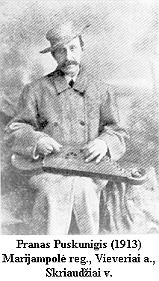| Group | Baltic (with Old Prussian, Lithuanian etc.), East Baltic (with Latvian, Lithuanian, and Semigalian) |
| Geography | Was spoken in parts of eastern Lithuania and Latvia. |
| History | The documents of the 13th - 15th centuries name a Baltic tribe who
used to be living in east Latvia and north-east Lithuania, speaking a language
that Russian manuscripts called Selonian. This nation was small, and is
included in the so-called "external" subgroup of Baltic languages - its
speakers neighboured with Slavs who were much more numerous at that time
and therefore influenced the Selonian language.
When the Great Principality of Lithuanian was established in the 13th century, all minor tribes and languages of Lithuania began to get assimilated, and so in the next century Selonian completely disappeared from the living speech and became extinct. In 1375 Teutonic chronicles call these lands populated by Lithuanians. |
| Phonetics | The region's toponyms show Selonian having z, s sounds instead of Lithuanian š and z', then c [ts] instead of Lithuanian palatal k. These two features resemble Latvian very much. The place names of the region keep Selonian frequent suffixes -aja-, -uoj-, -as-, -es- and others. Nowadays dialects of this district of Lithuania have some signs of Selonian as well: the change of the open e. into a (Lith. de.de. > dada). |
| Morphology | No morphological traces are left from Selonian, though the reconstruction is still possible. |
| Writing | No writing |
| Close Contacts | Mainly Slavic, which is seen from numerous slavicisms in place names. |
| Picture |  |
| More info |